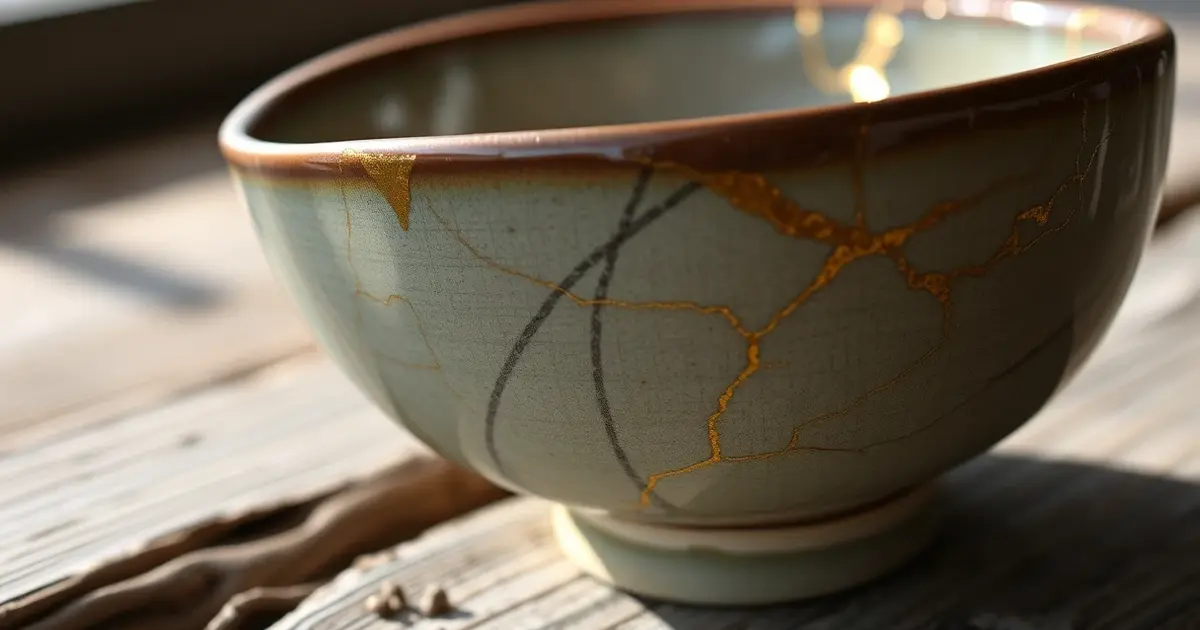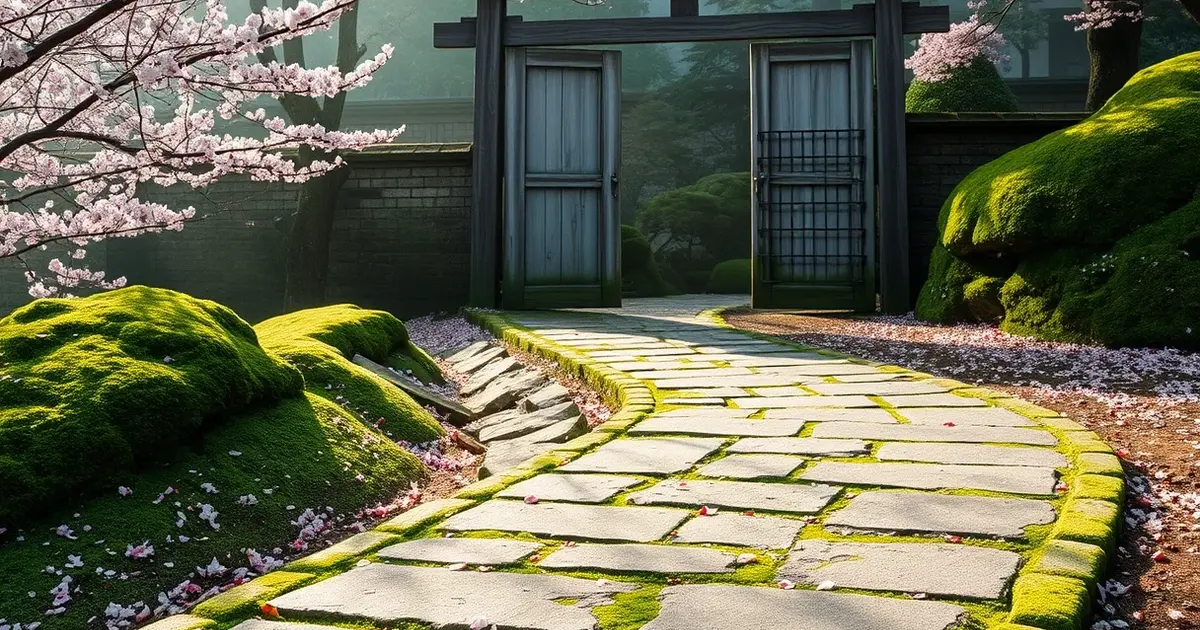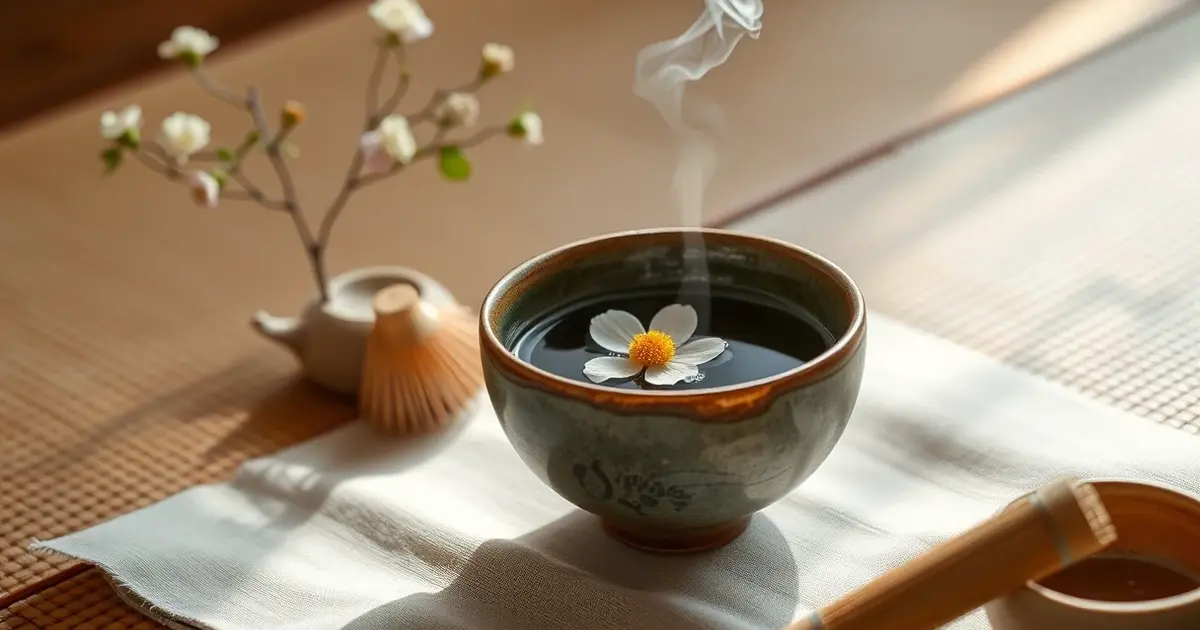In a world obsessed with perfection—flawless Instagram feeds, immaculate homes, and carefully curated lives—there exists a profound Japanese philosophy that offers liberation: wabi-sabi. This ancient worldview celebrates imperfection, impermanence, and incompleteness as pathways to authenticity and peace. Far more than an aesthetic trend, wabi-sabi offers a revolutionary approach to living that honors the natural cycles of growth, decay, and transformation.
The Essence of Wabi-Sabi

Wabi-sabi resists precise definition—appropriately so for a philosophy that embraces ambiguity. Emerging from Zen Buddhist teachings, “wabi” originally referred to the solitude of living in nature, later evolving to mean simplicity and freshness. “Sabi” conveyed the beauty that emerges with age and wear.
Together, these concepts form a worldview that finds profound beauty in the flawed, the weathered, and the transient. The cracked ceramic bowl repaired with gold (kintsugi), the asymmetrical handcrafted pottery, the weathered wood of an old farmhouse—these aren’t imperfections to be corrected but characteristics to be revered.
This philosophy stands in stark contrast to Western ideals of symmetry, permanence, and flawlessness. Where modern consumer culture pushes for the new and perfect, wabi-sabi honors the storied and imperfect. It’s not about neglect or disrepair, but about recognizing the inherent beauty in the natural cycle of all things.
Wabi-Sabi in Your Physical Space

Bringing wabi-sabi into your home doesn’t require purchasing special products—quite the opposite. It begins with appreciating what already exists and embracing natural processes:
Natural Materials: Favor items made from wood, stone, clay, linen, and other materials that age beautifully. Unlike synthetic materials designed to resist change, natural elements develop character over time—the patina on copper, the softening of linen, the silvering of wood.
Handcrafted Imperfection: Value the irregular, asymmetrical qualities of handmade items. The slight wobble in a hand-thrown ceramic mug doesn’t diminish its value—it’s evidence of human creation, a counterpoint to machine-made perfection.
Weathered Beauty: Rather than discarding items showing signs of age, appreciate their evolving story. The worn edges of a wooden table speak to gatherings shared; the faded fabric of a beloved chair reflects years of comfort provided.
Seasonal Awareness: Bring elements of the current season into your space—fallen leaves in autumn, blooming branches in spring. These ephemeral displays honor the transient nature of beauty that wabi-sabi celebrates.
Wabi-Sabi as a Mindset

Beyond aesthetics, wabi-sabi offers a transformative lens for experiencing life itself:
Embracing Impermanence: Rather than fighting against change, wabi-sabi invites us to acknowledge that everything is in flux. This awareness doesn’t lead to nihilism but to a deeper appreciation for the present moment—the cherry blossoms are magnificent precisely because they soon fall.
Finding Peace in Imperfection: When we release the exhausting pursuit of perfection, we discover authenticity. The Japanese concept of “mushin” (no-mind) encourages acceptance of things as they are, not as we think they should be. This applies to our homes, our work, and crucially, ourselves.
Cultivating Simplicity: Wabi-sabi aligns with minimalism but with a crucial difference—its focus isn’t efficiency or aesthetics but making space for meaning. By removing the unnecessary, we can better appreciate the essential.
Practicing Presence: The subtle beauty celebrated in wabi-sabi can only be perceived through slowed attention. The play of shadow on a wall, the irregular edge of handmade paper—these quiet details reveal themselves only to the unhurried observer.
Wabi-Sabi in Daily Rituals

The philosophy comes alive through intentional practices:
Mindful Maintenance: Rather than viewing household tasks as chores to complete efficiently, approach them as rituals. The Japanese practice of “oosouji” (the big clean) isn’t about achieving spotlessness but about expressing gratitude for one’s space through attentive care.
Tea Ceremony: Perhaps the ultimate expression of wabi-sabi principles, the traditional tea ceremony celebrates simple actions performed with complete attention. The irregularities in the tea bowl, the arrangement of seasonal flowers, the sound of water heating—all become objects of contemplation.
Kintsugi Living: Just as broken pottery is repaired with gold to highlight rather than hide its history, we can approach our own wounds and imperfections. Our challenges and healing become part of our beauty, not flaws to conceal.
Nature Observation: Regular, unhurried observation of natural processes—a plant growing, clouds forming, stones weathering—attunes us to the beauty of impermanence that surrounds us constantly.
The Revolutionary Power of Acceptance

In our era of environmental crisis, political polarization, and digital perfectionism, wabi-sabi offers revolutionary wisdom. By honoring imperfection and impermanence, we step off the exhausting treadmill of consumption and comparison.
When we appreciate the beauty of things as they are—including ourselves—we need less. We repair rather than replace. We find satisfaction in the present rather than endless striving. We recognize that the cracks, changes, and imperfections aren’t flaws in the system but the very essence of an authentic life.
Wabi-sabi doesn’t ask us to abandon ambition or care, but to ground these energies in acceptance rather than rejection of reality. In doing so, we might discover that the life we’ve been seeking has been here all along, hidden in plain sight among the beautiful imperfections we’ve been taught to overlook.
For more inspiration on embracing natural rhythms and authentic experiences, explore our guide to digital detox practices that help reclaim attention in our hyperconnected world.
Address Book:
•Wabi-Sabi for Artists, Designers, Poets & Philosophers by Leonard Koren
•The Japanese Tea Garden in San Francisco: Historic garden exemplifying wabi-sabi principles
•Mashiko Pottery Village, Japan: Traditional ceramics celebrating handcrafted imperfection
